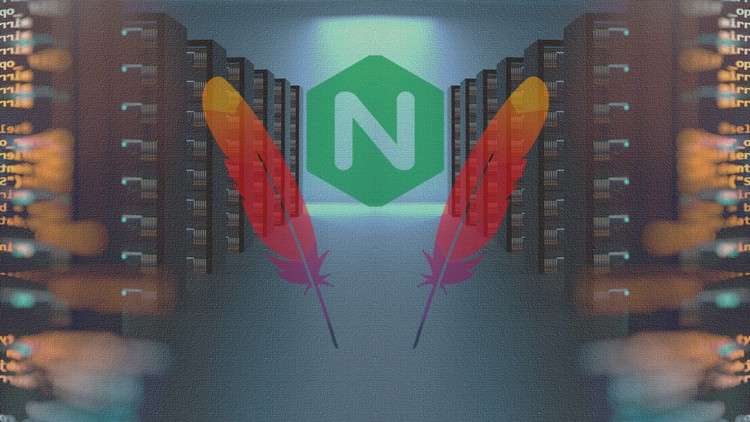
Apache Web Server + NGINX PHP + HTTP HTTPS SSL/TLS Server Infrastructure Deployment Linux System Network Administration
What you will learn
Apache Web Server
NGINX Web Server Infrastructure Deployment
How to Install and Configure Apache Web Server
NGINX + PHP + HTTP HTTPS SSL/TLS Server Infrastructure Deployment
Adjusting the Firewall + Checking your Web Server
Managing the Apache Process
Setting Up Virtual Hosts and Configuring Modules
How to Configure Apache SSL – HTTPS Web Server
What is PHP and PHP-FPM and How to Install Apache with PHP-FPM
Install Nginx as a Reverse Proxy for Apache + SSL
Description
In this comprehensive course, you will delve into the intricacies of web server infrastructure deployment, focusing on two powerhouse servers Apache and NGINX. The journey begins with detailed instructions on installing and configuring Apache, progressing seamlessly into the realm of securing your server with HTTP, HTTPS, and SSL/TLS protocols. Firewall adjustments and thorough web server checks form an integral part of the curriculum. Gain expertise in managing the Apache process, setting up virtual hosts, and configuring modules to optimize server performance. The course extends its coverage to the dynamic combination of NGINX, PHP, and PHP-FPM, guiding you through the installation process and shedding light on the installation of Apache with PHP-FPM. Unravel the complexities of configuring Apache SSL and HTTPS web servers while acquiring the skills to integrate Nginx as a reverse proxy for Apache, all within the context of SSL encryption. By the course’s conclusion, you’ll possess a robust skill set to navigate the intricacies of web server deployment and configuration with confidence.
Apache, a widely-used open-source web server, is renowned for its versatility and stability. With a focus on ease of configuration and a modular design, Apache excels in handling dynamic content through modules like mod_php. PHP-FPM, on the other hand, stands for FastCGI Process Manager for PHP, enhancing PHP’s performance by providing a separate process pool to handle requests. It allows for more efficient handling of PHP scripts, optimizing resource usage. In tandem, NGINX, another powerful web server, acts as a reverse proxy for Apache. NGINX excels in efficiently handling concurrent connections and static content, making it an ideal front-end server. This setup capitalizes on NGINX’s speed and efficiency in serving static content while delegating dynamic content processing to Apache with PHP-FPM. The result is a robust and scalable web infrastructure that leverages the strengths of each component, providing a seamless user experience and optimal performance for web applications.
Content